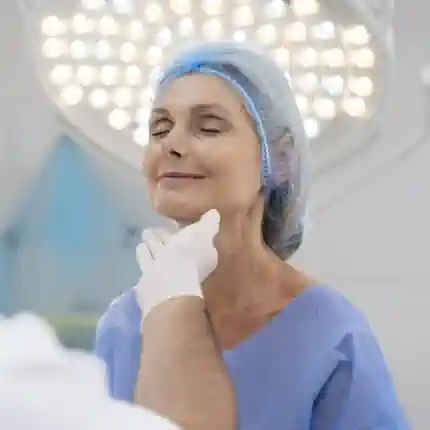The primary function of the nose is breathing. When undergoing rhinoplasty (commonly known as a nose job), it is essential not only to enhance the nose's appearance but also to ensure that the patient can breathe easily and comfortably. Achieving a balance between a natural, aesthetically pleasing nose and proper breathing function is key.
Pre-Surgery Evaluation: A Crucial Step
The path to achieving both beauty and functionality begins with a detailed, thorough examination before rhinoplasty surgery. Identifying structural issues and breathing problems ahead of time is one of the most important steps in ensuring the success of the procedure. Addressing these concerns before surgery is crucial to improving both the nose's appearance and its ability to function properly.
Goals of Rhinoplasty: Beauty and Breathing
The primary goal of rhinoplasty is to create a nose that is both natural and attractive, harmonizing with the patient's face. Equally important is preserving or improving breathing by addressing any underlying structural issues, such as deformities or nasal obstruction, during the surgery. For patients experiencing breathing problems due to nasal deformities or enlarged turbinates, rhinoplasty offers an opportunity to correct these issues. These problems, particularly when they affect breathing during sleep, can have a significant impact on the patient's quality of life.
Common Breathing Issues Addressed During Rhinoplasty
During rhinoplasty surgery, surgeons can correct several structural problems that contribute to breathing difficulties:
- Enlarged Turbinates: Turbinates, or nasal "meat," can be reduced to improve airflow.
- Weak Nasal Cartilage: Strengthening weak cartilage in the nasal wings can enhance support and prevent collapse, which can cause obstruction.
- Deviated Nasal Septum: Correcting a deviated septum (the partition between the nostrils) can resolve congestion and improve breathing.
- Sinusitis or Other Sinus Issues: These conditions can be addressed simultaneously during surgery for comprehensive treatment.
Key Considerations for Rhinoplasty Surgery
To ensure both aesthetic and functional success, the following factors must be taken into account:
- If the patient has both aesthetic concerns and breathing difficulties, both should be treated simultaneously.
- If nasal cartilage or bone deviation is present, it must be corrected.
- Care should be taken to avoid removing excessive cartilage or bone, as this can cause nasal collapse or congestion, even in patients who had no pre-existing breathing issues.
Conclusion: A Holistic Approach to Rhinoplasty
In summary, rhinoplasty is not only about improving the appearance of the nose but also about ensuring proper breathing. By addressing nasal deformities, cartilage weakness, and other breathing issues, patients can achieve a nose that is both beautiful and functional. However, it is crucial that the surgeon performs the procedure carefully to prevent postoperative breathing problems.
This holistic approach ensures that the patient enjoys both aesthetic improvement and enhanced quality of life.
 Big.webp)
 Weight Loss.webp)

 Robert Diş 1.webp)
 Treatments Laser Eye 1.webp)